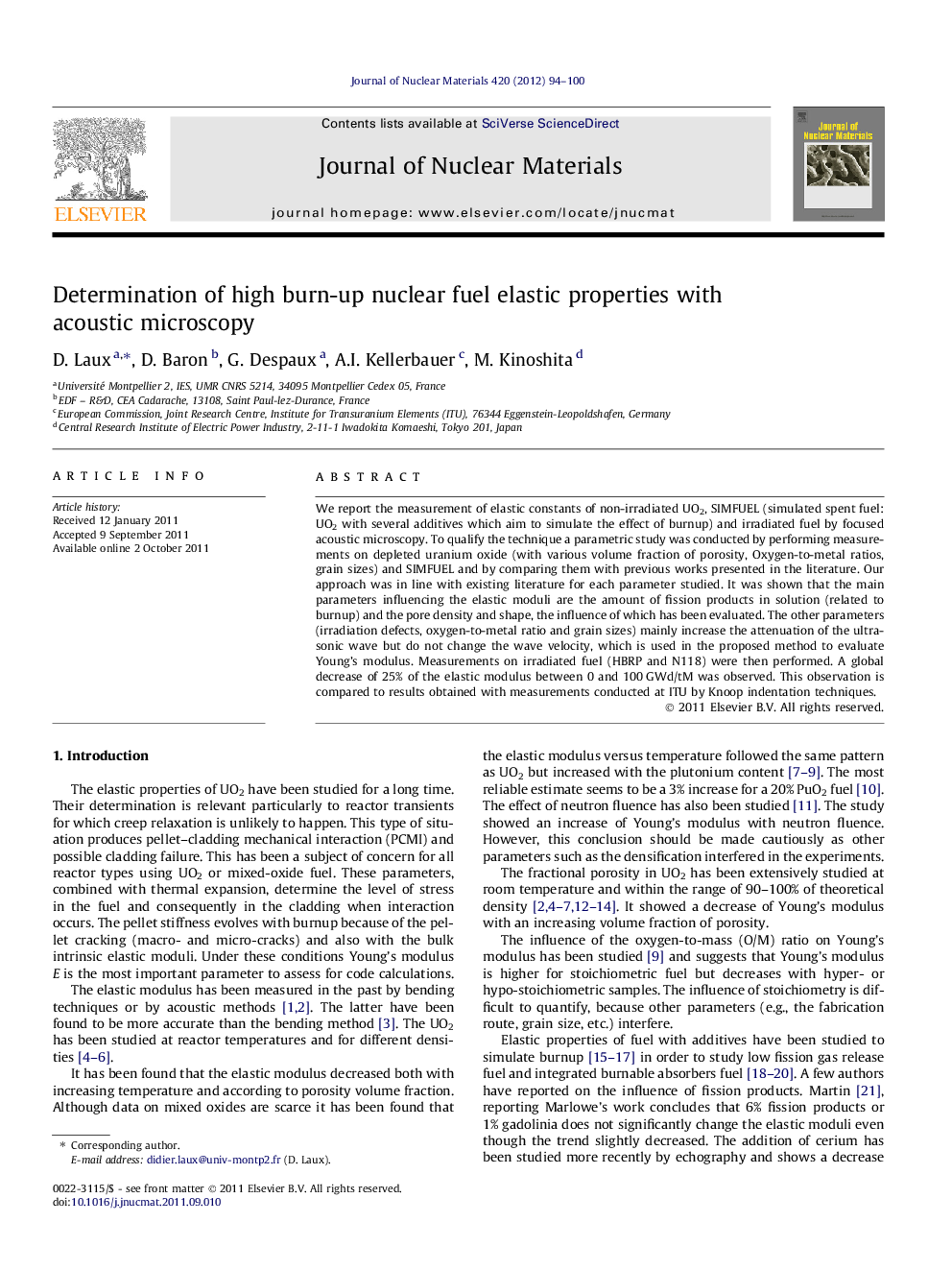| Article ID | Journal | Published Year | Pages | File Type |
|---|---|---|---|---|
| 1566442 | Journal of Nuclear Materials | 2012 | 7 Pages |
We report the measurement of elastic constants of non-irradiated UO2, SIMFUEL (simulated spent fuel: UO2 with several additives which aim to simulate the effect of burnup) and irradiated fuel by focused acoustic microscopy. To qualify the technique a parametric study was conducted by performing measurements on depleted uranium oxide (with various volume fraction of porosity, Oxygen-to-metal ratios, grain sizes) and SIMFUEL and by comparing them with previous works presented in the literature. Our approach was in line with existing literature for each parameter studied. It was shown that the main parameters influencing the elastic moduli are the amount of fission products in solution (related to burnup) and the pore density and shape, the influence of which has been evaluated. The other parameters (irradiation defects, oxygen-to-metal ratio and grain sizes) mainly increase the attenuation of the ultrasonic wave but do not change the wave velocity, which is used in the proposed method to evaluate Young’s modulus. Measurements on irradiated fuel (HBRP and N118) were then performed. A global decrease of 25% of the elastic modulus between 0 and 100 GWd/tM was observed. This observation is compared to results obtained with measurements conducted at ITU by Knoop indentation techniques.
► Elastic constants of nuclear fuel were measured by acoustic microscopy. ► Our approach was in line with existing literature on non-irradiated material. ► Measurements on several samples of irradiated fuel (HBRP and N118) were performed. ► A decrease of 25% of the elastic modulus between 0 and 100 GWd/tM was observed. ► This trend is in good agreement with measurements conducted with indentation method.
